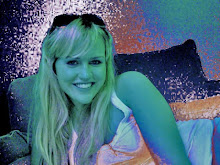Monday, February 22, 2010
Journal 5
How Good is Good?
Some of the points that stood out most are how his views have changed from the beginning to; Help others, don't hurt anybody, and strive for happiness. I wonder what all happened to make him change his priorities around though.
I enjoyed all of the bold points that he made and how underneath each one was defined. Design can simplify our lifes, it can make the world a safer place, and design can make us raise money were the ones I related to most. Like I mentioned above, after watching the video and reading this article, I hope that my designs will make a difference.
Sunday, February 21, 2010
Final Product!
Professional: of or for a professional person or his or her place of business or work:
Synonyms: able, acknowledged, adept, competent, efficient, experienced, expert, known, learned, licensed, polished, practiced, proficient, qualified, sharp, skillful, well-qualified
Anxiety: distress or uneasiness of mind caused by fear of danger or misfortune: earnest but tense desire.
Synonyms: fear, foreboding; worry, disquiet, eagerness
To suggest a sense of suspension
To suggest a sense of professionalism and jurisdiction
To suggest a sense of fear
To suggest a sense of mystery
To suggest a sense of high class
To suggest a sense of Ivy league class
To suggest a sense of unknown and turning on people



Saturday, February 20, 2010
Journal 4
Who is Bruce Mao? He is a well-known as a graphic designer and his innovative communication design. He is Chief Creative Officer of Bruce Mau Design, and was most noticed when he worked an award winning book with Rem Koolhass.
On his website bruce Mao outlines several mantras in which he believes contribute to the bettering of design. I choose #1.
1. Allow events to change you.
You have to be willing to grow. Growth is different from something that happens to you. You produce it. You live it. The prerequisites for growth: the openness to experience events and the willingness to be changed by them.
I picked number one because i feel that i do not step out of my comfort zone and experiment. I instead will stay around people and places that I am comfortable with and therefore not change. Last year I was afraid to change who I was and that I would lose sight of who I am. I realized that branching out and trying new things, within reason, can only help me grow as a person. I am going to continue to do so and hope for the best and that I will be inspired.
Sunday, February 14, 2010
Journal 3
Wednesday, February 10, 2010
Monday, February 1, 2010
Chipp Kidd and Step Mag
Chipp Kidd
Thomas Allen creates dioramas from pulp scifi novels for bookjackets and photographs them.
Smithsonian Q&A
He relaxed his turning point when he recognized the potential he had as a writer and ability to generate content and communicate it visually.
Unique Ideas depend on unique content
The challenge of a designer in trade publishing is to do something that’s an interesting design, but also has mass appeal.
The most challenging cover for him to design was that of the New Testament. He took a risk and used a controversal photographer who placed a dead mans face as the picture. No bookstores would carry it.
being an author made him more sympathetic to authors he designs for beause their work is assigned a visual identity.
Magazine covers strive to tell you everything and can’t tell you enough. Whereas, a book cover, if done right, suggests a sensibility, and is discrete. Book Cover design has become smarter making designers and publishers want challenging ideas.
Step Mag: John Gall art director at Vintage
Gall’s style is simple but elegant use of typography and quietly rebellious spirit. His covers play with the pereptions of the viewer by being subtle and compelling. Collage, photography, typography and art are all grist for the mill, yet no matter how varied the medium. A great book cover conveys the essence of the book in a unique and surprising way that pushes the design envelope a bit.






























